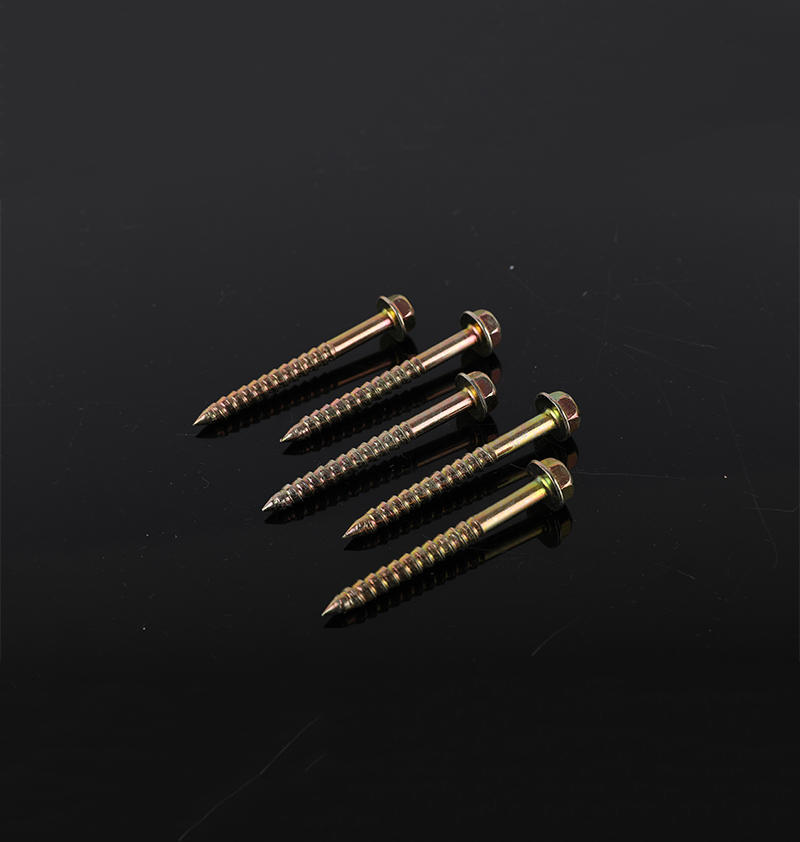

 Haiyan county, hangzhou city, zhejiang province China Square Head Wood Screw Manufacturers Square Head Wood Screw With Turning Suppliers
Haiyan county, hangzhou city, zhejiang province China Square Head Wood Screw Manufacturers Square Head Wood Screw With Turning Suppliers
In 1986, the country established a new standard for sta […]
In 1986, the country established a new standard for standard parts, commonly known as the new standard. The most used ones are GB5780, GB5781, GB5782, GB5783, and GB5784. GB5780 is a hexagonal head thick shank half-thread screw, and its accuracy grade is C grade product, which can be replaced by GB5782 (GB5782 is a hexagonal head thick shank half-thread screw, and its accuracy is grade A and B.) GB5781 is a hexagon head full Thread screw, accuracy grade is C grade product. It can be replaced by GB5783 (GB5783 is a hexagon head full-thread screw, and its accuracy grades are A and B). GB5784 is a hexagon socket wood screw with a thin rod and half tooth.
The difference between the new standard and the old standard is: M8, M10, M12, M14, and M22 series products differ in the width of opposite sides. Except for the new products of the M22 series, the opposite sides of the heads of the new standard products M8, M10, M12, and M14 are 1MM smaller than the opposite sides of the old standard. Respectively 13, 16, 18, 21MM, and the new products of the M22 series, the new standard is 2MM larger than the opposite side of the old standard, so special attention should be paid. For the thickness of the head, there is a slight difference between the new standard and the old standard, which can be used in general if the requirements are not very strict.
The difference between the new standard and the German standard is that the product specifications of M10, M12, M14, and M22 differ in the width of the opposite sides. The new heads of M10, M12, and M14 are 1MM smaller than the German standard. As for the new product of M22, the opposite side of the head is 2mm larger than the opposite side of the German standard. Others can be used.
For hexagonal nuts, commonly used standards are: GB52, GB6170, GB6172 and DIN934. The main differences between them are: GB6170 is thicker than GB52, GB6172 and DIN934, commonly known as thick nuts. The other is the difference between the opposite sides. In the M8 nut series, the opposite sides of DIN934, GB6170 and GB6172 are 13MM which is 1MM smaller than the 14MM of GB52. For the M10 nut, the opposite side of DIN934 and GB52 is 17MM, The opposite side of GB6170 and GB6172 is 1MM larger. For M12 nuts, the opposite side of DIN934 and GB52 is 19MM than the opposite side of GB6170 and GB6172 18MM is 1MM larger. For M14 nuts, the opposite side of DIN934 and GB52 is 22MM, which is 1MM larger than the opposite side of GB6170 and GB6172, 21MM. The other is the M22 nut. The opposite side of DIN934 and GB52 is 32MM, which is 2MM smaller than the 34MM opposite of GB6170 and GB6172. (GB6170 and GB6172 have the same width on opposite sides except for their different thicknesses.) Other specifications can be used universally regardless of thickness.
Regarding the hexagonal socket, there are two versions of the national standard, one is GB70-76, the 76 version, and the other is GB70-85, the 85 version. Most of them follow the DIN912 standard, so you should pay attention to the difference in actual business operations: GB70 —85 and DIN912 completely overlap, so there is no difference when using the new standard, mainly because there is a difference between GB70-76 and DIN912: M8 series of hexagonal socket products, GB70-76 has a round head diameter of 12.5MM, It is smaller than 13.27MM of DIN912, M10 series of hexagonal products, GB70-76 has a round head diameter of 15MM, which is smaller than DIN912 16.27, M12 series of internal hexagons, GB70-76 has a round head diameter of 18MM, It is smaller than the opposite side of DIN912 at 18.27, and the round head diameter of the inner hexagonal GB70-76 of the M16 and M20 series is 0.33MM smaller than that of DIN912, respectively 24MM and 30MM. DIN912 is 24.33MM and 30.33MM respectively. In addition, the inner opposite side width between the old standard and German standard inner hexagon is different due to different standards. The inner opposite side of GB70-76 is smaller, and attention should also be paid in business operations.
In addition, there are some differences in carriage screws that may be used in ordinary times. Here is also an explanation. In the national standard, there are two standards for carriage screws, namely GB12 (small semi-circular head square neck screws) and GB14 (large semi-circular head square neck screws). Neck screws), and the German standard DIN603 is commonly used in the market. Now make a distinction between these three: For round head and neck, when comparing the same specification, it is: GB12<GB14<DIN603<SPAN>. Usually when the carriage screw is used, the head and neck are often required to be large and thick, so the DIN603 carriage screw standard fully meets the requirements.
